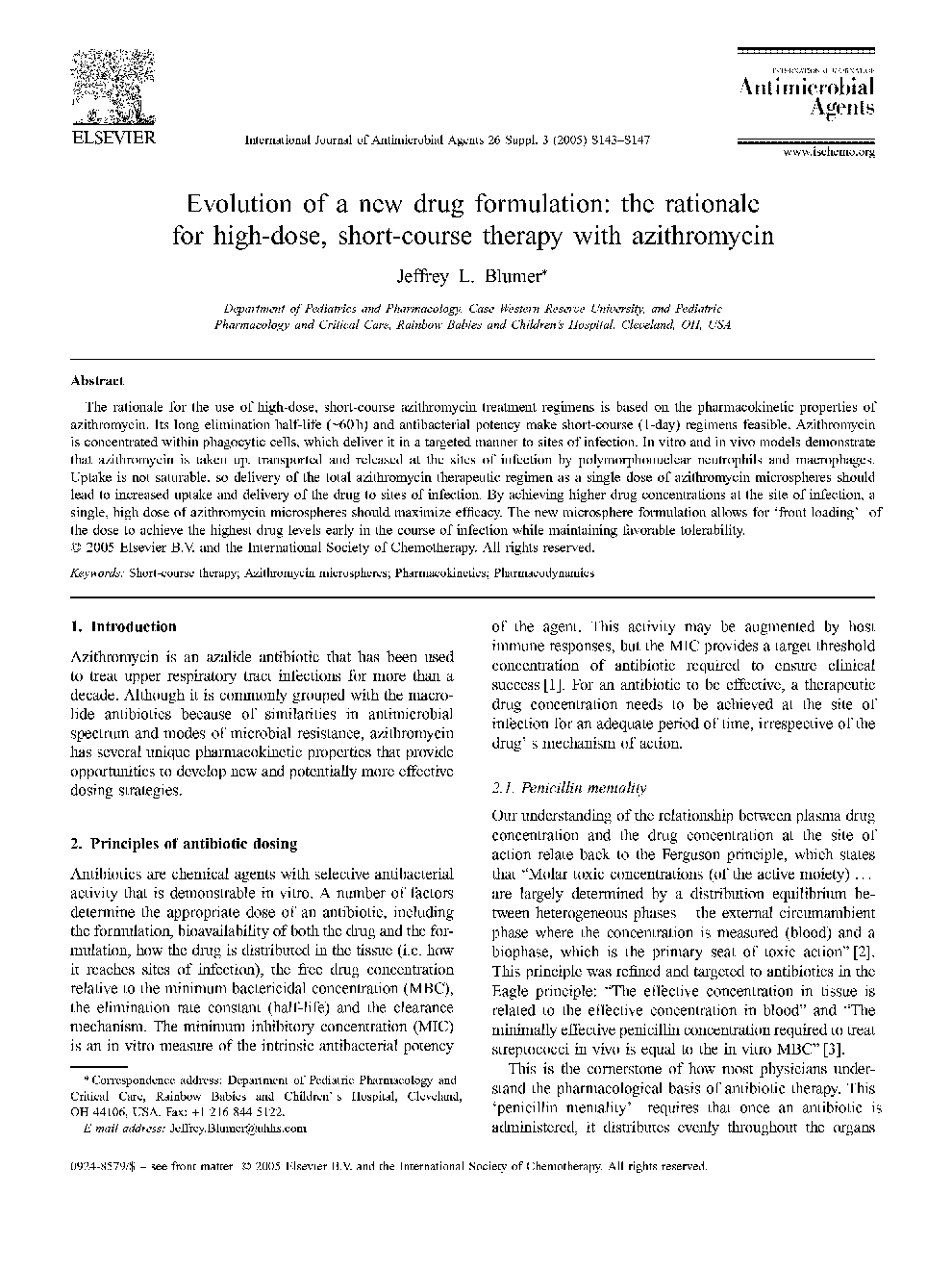| Article ID | Journal | Published Year | Pages | File Type |
|---|---|---|---|---|
| 10027796 | International Journal of Antimicrobial Agents | 2005 | 5 Pages |
Abstract
The rationale for the use of high-dose, short-course azithromycin treatment regimens is based on the pharmacokinetic properties of azithromycin. Its long elimination half-life (â60 h) and antibacterial potency make short-course (1-day) regimens feasible. Azithromycin is concentrated within phagocytic cells, which deliver it in a targeted manner to sites of infection. In vitro and in vivo models demonstrate that azithromycin is taken up, transported and released at the sites of infection by polymorphonuclear neutrophils and macrophages. Uptake is not saturable, so delivery of the total azithromycin therapeutic regimen as a single dose of azithromycin microspheres should lead to increased uptake and delivery of the drug to sites of infection. By achieving higher drug concentrations at the site of infection, a single, high dose of azithromycin microspheres should maximize efficacy. The new microsphere formulation allows for 'front loading' of the dose to achieve the highest drug levels early in the course of infection while maintaining favorable tolerability.
Related Topics
Life Sciences
Immunology and Microbiology
Applied Microbiology and Biotechnology
Authors
Jeffrey L. Blumer,
